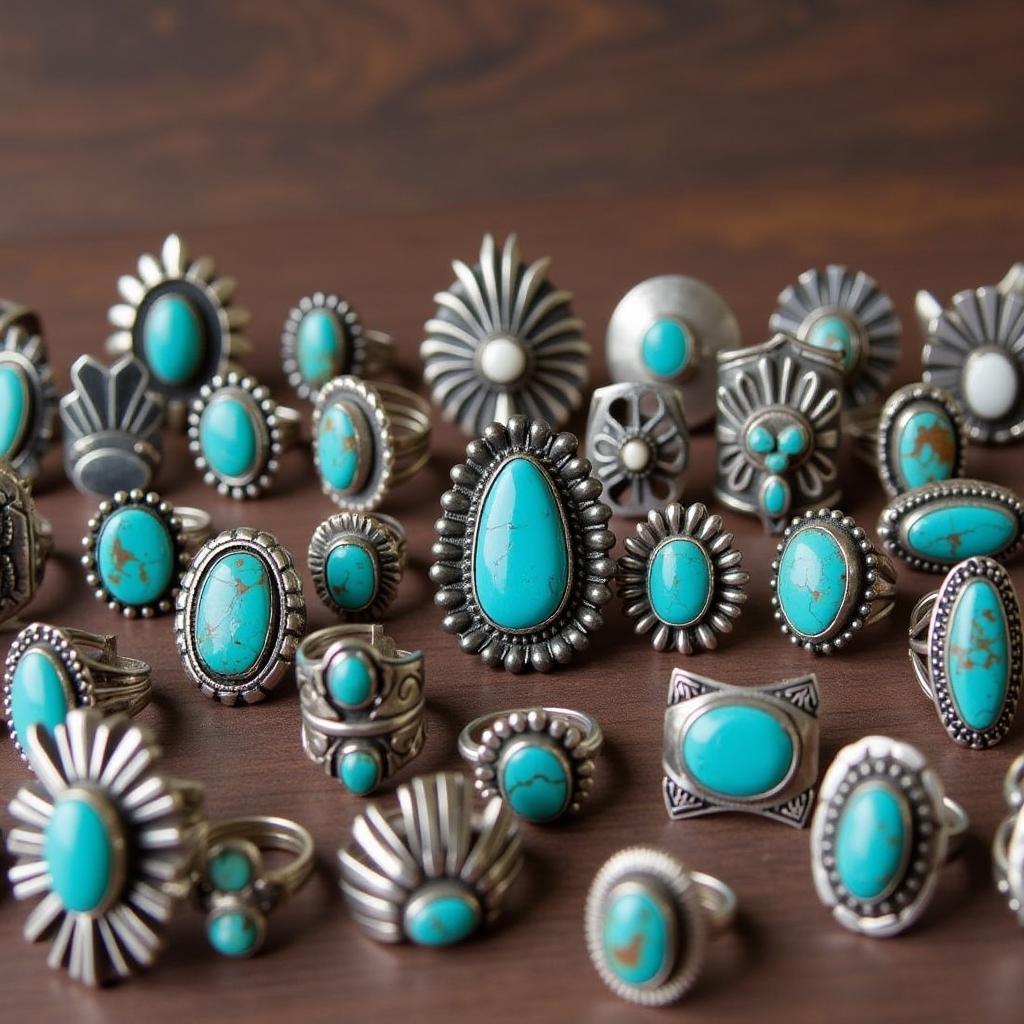Turquoise Indian Head Rings: A Guide to Their History, Meaning, and Value
October 19, 2024Turquoise Indian Head Rings are a beautiful and unique form of Native American jewelry. They are instantly recognizable by their central design element: a meticulously crafted depiction of a Native American person’s head, often adorned with traditional headdresses or other culturally significant details. The vibrant turquoise stones, often set in sterling silver, add a striking contrast and enhance the intricate details of the head carving.
The History and Origins of Turquoise Indian Head Rings
These rings have a rich history that dates back to the late 19th century. They emerged during a period when Native American art and crafts were gaining popularity among tourists and collectors. The Southwestern United States, particularly the areas inhabited by the Navajo, Zuni, and Hopi tribes, became known for these distinctive rings.
The creation of these rings was influenced by the interaction between Native American artists and the growing tourist trade. Traders often provided materials, like silver and gemstones, and requested specific designs that would appeal to buyers.
The Significance of Turquoise
Turquoise holds a deeply spiritual and cultural significance for many Native American tribes. It is believed to possess protective qualities and is often associated with healing, luck, and connection to the natural world. The stone’s captivating blue-green color is also thought to represent water, an essential element for life in the arid Southwest.
The use of turquoise in Indian head rings adds a layer of meaning to the piece. It’s not just an aesthetically pleasing gemstone; it represents a connection to Native American heritage and beliefs.
Different Styles and Designs
While the central theme of the Native American head remains consistent, turquoise Indian head rings exhibit a diverse range of styles and designs. Some rings feature realistic portraits, while others are more stylized or abstract.
- Navajo Rings: Often characterized by heavier silverwork and intricate stamping designs.
- Zuni Rings: Known for their delicate silverwork, often featuring channel inlay techniques.
- Hopi Rings: May incorporate overlay techniques, creating a multi-dimensional effect.
Factors Affecting Value
The value of a turquoise Indian head ring can vary widely depending on several factors:
- Artist: Rings made by well-known or highly skilled artists command higher prices.
- Turquoise Quality: The color, clarity, and matrix (natural patterns in the stone) of the turquoise significantly impact value.
- Silverwork: The craftsmanship and intricacy of the silverwork contribute to a ring’s value.
- Age and Condition: Antique rings in good condition are often more valuable than newer pieces.
 A Collection of Turquoise Indian Head Rings
A Collection of Turquoise Indian Head Rings
Caring for Your Turquoise Indian Head Ring
To keep your ring looking its best, it’s essential to handle it with care:
- Store properly: Keep it in a dry, cool place, preferably in a jewelry box lined with soft fabric.
- Avoid chemicals: Exposure to harsh chemicals, perfumes, or lotions can damage the turquoise and silver.
- Clean gently: Use a soft, dry cloth to wipe away dust and dirt. Avoid using abrasive cleaners.
Conclusion
Turquoise Indian head rings are more than just pieces of jewelry; they are wearable art forms steeped in history, culture, and symbolism. Whether you’re drawn to their striking beauty, their cultural significance, or their potential as collector’s items, these rings offer a fascinating glimpse into Native American artistry and heritage.